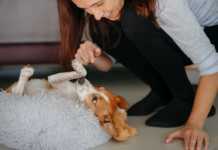Last Updated on August 4, 2024 by Ali Hamza
Table of Contents
Tips for Keeping Your Older Cat Feeling Their Best
Attend Regularly-Scheduled Visits to the Veterinarian
Because senior animals can be more prone to health problems that develop with age, it’s
important that you maintain a regular visit schedule with your family veterinarian. Your cat’s veterinarian may want to conduct annual blood work and exams to ensure your feline friend stays healthy and to catch any changes early.
Visiting the same veterinarian over the long term is also important when you have a senior animal. Your veterinarian will get to know your pet quite well, whereas if you change vet hospitals constantly, your veterinarian won’t be able to see even slight changes in blood work results.
To help minimize the cost of medical care for your elderly cat, it’s smart to purchase a cat health insurance policy while they’re still young and don’t have any pre-existing conditions. This type of insurance can reimburse you for a portion of the out-of-pocket expenses associated with caring for your pet – a financial lifeline for most pet parents.
Upgrade Their Diet to Senior Cat Food
As your cat ages, their dietary needs change. Starting at about 10 years old, your cat may need more protein for energy and to sustain their body mass. Cat food formulated specifically for elderly cats provides between six and eight grams of high quality protein per kilogram of body weight.
To know how much to feed your cat, read the recommendations provided on the pet food label. And remember to follow the concept of “feed the pet in front of you.” If your cat needs more food, it’s OK to exceed the recommendations on the label. Every pet’s metabolism is different. And you can always ask your veterinarian for their advice on your cat’s nutritional needs.
Keep Your Cat Active
As your cat ages, you may notice that they sleep more and have fewer “zoomies.” That’s perfectly okay, as long as your pet is still fairly active to maintain muscle mass. You may need to get creative to keep your cat moving. Try new types of toys to engage your cat. If your elderly cat is the type to follow you from room-to-room, consider walking around your home for no reason at all, other than to help your pet get exercise.
Modify Their Spaces to Accommodate Mobility Changes
Just like humans, as animals age, they can develop mobility problems like arthritis. If you notice your cat has difficulty jumping up and down from furniture or their scratching post, it may be time to help them out.
Pet stairs are an inexpensive way to help your cat get from the floor to their favourite elevated surfaces, and they help prevent injury, too. You could also try your hand at DIY ramp-building to get your cat from place to place.
Watch for Warning Signs
You may notice changes in your cat’s behavior as they age, and many are perfectly normal. But if you see that your elderly cat has increased thirst, weight loss, bad breath, changes in temperament, disorientation, or frequent inappropriate house soiling, it’s time for a visit to your veterinarian.
Read More: Can Isopods Be Pets – Read All About It Here


























